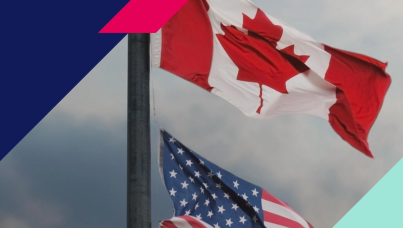AS PARLIAMENT RE-OPENS, HEALTHCARE AND THE LIBERALS HAND-IN-HAND AS CHART LEADERS
AS PARLIAMENT RE-OPENS, HEALTHCARE AND THE LIBERALS HAND-IN-HAND AS CHART LEADERS
HEALTHCARE DOMINATES (43%) AS NO. 1 NATIONAL ISSUE WITH LIBERALS AT 47% IN STANDINGS
This Angus Reid Group/Globe and Mail/CTV poll was conducted by telephone from January 20th to the 25th, 1999 among a representative cross-section of 1,515 Canadian adults.
These data were statistically weighted to ensure the sample's regional and age/sex composition reflects that of the actual Canadian population according to the 1996 Census data.
With a national sample of 1,515, one can say with 95 percent certainty that the results are within +2.5 percentage points of what they would have been had the entire adult Canadian population been polled. The margin of error will be larger within regions and for other sub-groupings of the survey population.
As Parliament re-opens, healthcare and the Liberals are sitting at the top of the charts. Healthcare (43%) dominates as the top-of-mind issue of concern by Canadians and the Liberals (47%) hold tight with a continued lead in the party standings.
A National Angus Reid Poll conducted among 1,515 Canadians between January 20th and January 25th, 1999 provides the following insights into federal party standings and the issues of the day for Canadians.
HEALTHCARE
Climbing another three percentage points, healthcare (43%) remains the number one issue of concern to Canadians. The current level of concern for healthcare in Canada marks a steady climb witnessed in the polls since January of 1997.
- In January 1997, only 17% mentioned healthcare as the most important issue confronting Canadians.
- Since July of 1998, healthcare has climbed fifteen percentage points from 28% to the current 43%.
Other issues confronting Canadians that are frequently mentioned include the following:
- Unemployment (25%) - down two percentage points since the last sounding in November 1998.
- National Unity (20%) - down seven percentage points since November 1998.
- The Economy (18%) - down four percentage points over the past two months.
- Education (16%) - down four percentage points since November 1998.
- Deficit/Debt/Spending (14%) - virtually holding the same proportion of mentions since our last sounding.
- Poverty and Homelessness (11%) - up three percentage points since November 1998.
- Taxes and Tax Reform (10%) - virtually holding the same level of concern as an issue of importance to Canadians compared to November 1998.
FEDERAL PARTY STANDINGS
The Liberals currently hold 47 percent of the decided vote. This is consistent with our previous surveys in September (47%) and December (45%) of 1998. In fact, the Liberals found themselves at the exact same level of popularity one year ago in January of 1998 (47%) marking a nine percentage point gain for the Liberals since the election in June 1997 when they held 38% of decided voters.
- The Progressive Conservatives (14%) and the Reform Party (14%) remain neck-in-neck with both parties virtually holding the same level of support as they did in December 1998 - both held 15% of the vote.
- The NDP (12%) and the BQ (11%) both hold on to the same level of support they held in December 1998. (The NDP is down one percentage point; the BQ is up one point.)
Across the major regions, the federal party standings are as follows:
- In British Columbia, the NDP is at 13% while the Liberals hold at 43% of decided voters. Support for Reform (30%) has declined slightly since December 1998 - down four percentage points (34%). The Progressive Conservatives (11%) gain just two percentage points since the last federal soundings.
- Next door in Alberta, the Reform party is losing some ground dropping from 43% in December 1998 to 38% in the present standings. On the flip side, the Liberals (33%) witness a very slight gain of two percentage points since the last sounding, but an overall increase of five percentage points since September 1998 (28%). The Progressive Conservatives and the NDP sit at 18% and 11% respectively.
- Liberal Party support (45%) in Manitoba/Saskatchewan vaults 10 percentage points in just two months (35% in December 1998). Consequently, the NDP (22%) loses 5 percentage points and Reform loses the same ground (down 6 percentage points) holding on to 21% of the decided vote. The Progressive Conservative Party sits at 12% in the polls. The Liberals (59%) with a four percentage point gain since December 1998 remain well in front of the other parties in Ontario. The Conservatives hold second place with 18 percent, and the Reform is at 12% of the decided vote. The NDP has dropped into fourth place, sitting at 10% - down three percentage points since December 1998.
- In Quйbec, the Bloc Quйbйcois is six percentage points ahead of the Liberals (44% versus 38%). For the Liberals, the current standing marks a eight percentage point drop since October 1998 while the Bloc has gained four percentage points in the same space of time.
- The Liberals (41%) remain number one among decided voters in Atlantic Canada; however, support since December 1998 has dropped by six percentage points. The Progressive Conservatives are fairly steady at 29% of the decided vote (two percentage points down from December 1998), while the NDP (21%) gained some ground but remains in third - up five percentage points since December 1998.
For further information, please contact:
Dr. Darrell Bricker
Executive Vice-President
Angus Reid Group
(416) 324-2900
Christian Bourque
Directeur de recherche Affaires
Groupe Angus Reid
(514) 877-5550



